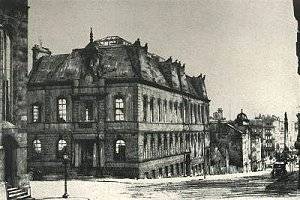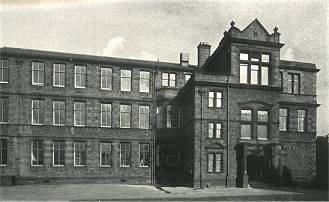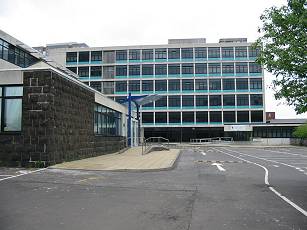Allan Glen's School
Allan Glen's will stated that his Trustees were to invest his estate to build and endow a school, the purpose of which was "to give a good practical education and preparation for trades or businesses, to between forty to fifty boys, the sons of tradesmen or persons in the industrial classes of society". This was called Allan Glen's School and it opened in 1853.
 In 1876, the governors obtained the Allan Glen's Institution Act and embarked upon an extensive programme of scientific and technical education. Amongst other things, the Act gave the Governors the power to admit pupils upon the payment of fees, while providing free education and clothing for those whose circumstances were less fortunate. They could also grant bursaries to boys going to Glasgow University, or provide funds for pupils to sit scholarship exams in England or elsewhere in Scotland. This resulted in Allan Glen's School being transformed from a small charitable foundation into Glasgow's de facto High School of Science.
In 1876, the governors obtained the Allan Glen's Institution Act and embarked upon an extensive programme of scientific and technical education. Amongst other things, the Act gave the Governors the power to admit pupils upon the payment of fees, while providing free education and clothing for those whose circumstances were less fortunate. They could also grant bursaries to boys going to Glasgow University, or provide funds for pupils to sit scholarship exams in England or elsewhere in Scotland. This resulted in Allan Glen's School being transformed from a small charitable foundation into Glasgow's de facto High School of Science.
In 1887, Allan Glen's Institution amalgamated with Anderson's College, the College of Science and Arts, the Young Chair of Technical Chemistry and Atkinson's Institution to form the Glasgow and West of Scotland Technical College (later the Royal College of Science and Technology, now part of Strathclyde University). The intention was that Allan Glen's School should be developed as a feeder institution for higher scientific education in Glasgow. By the end of 1888 a new building was ready for the school in North Hanover Street. One contemporary report states that its science laboratory was without equal in its equipment in Britain.
Transfer to the School Board
Changes in the Scottish education system and its funding resulted in the Board agreeing in 1911 to the transfer of the school to the local authority. This was under condition that the name was retained, that the endowments would be transferred subject to the board taking on the obligations of the 1886 scheme and that the school would carry on as a science high school equivalent pari passu with the High School of Glasgow, which had been under the auspices of the school board for some years.
New Buildings
Accommodation problems resulted in a move in 1926, to Montrose Street, where the school was situated for some forty years before the 60s saw the construction of a new building adjacent to the old one.

The Montrose Street building

The new building at Cathedral Street
The Political Debate
The transfer to the school board in the earlier part of the century, while protecting the special nature of the school, ultimately led to its demise. Education acts over the years meant universal provision of education and the Labour Party had pledged to abolish fee-paying and selection in favour of the Comprehensive system. Although the fees were latterly a nominal amount, selection was still under fire. Amid bitter arguments and harsh words the educational arguments in favour or against selection were lost to dogma and the fate of Allan Glen's and five similar schools, including Glasgow High School, was sealed. Allan Glen's was merged with City Public School to become the local comprehensive school for the area.
Although the merged school was called Allan Glen's Secondary School, in the view of the headmaster, RA Finlayson, and the Club, the nature of the new school was so different from that founded by Allan Glen that the school ended on 22nd August 1973. This was neither snobbery nor a slight on the new intake of pupils but a reflection that the school's unique identity was gone and that the name had simply been transferred to a different school. Only a few years later demographic changes meant that the catchment area could no longer support the number of schools in the area and in 1989 Allan Glen's Secondary School was itself closed.